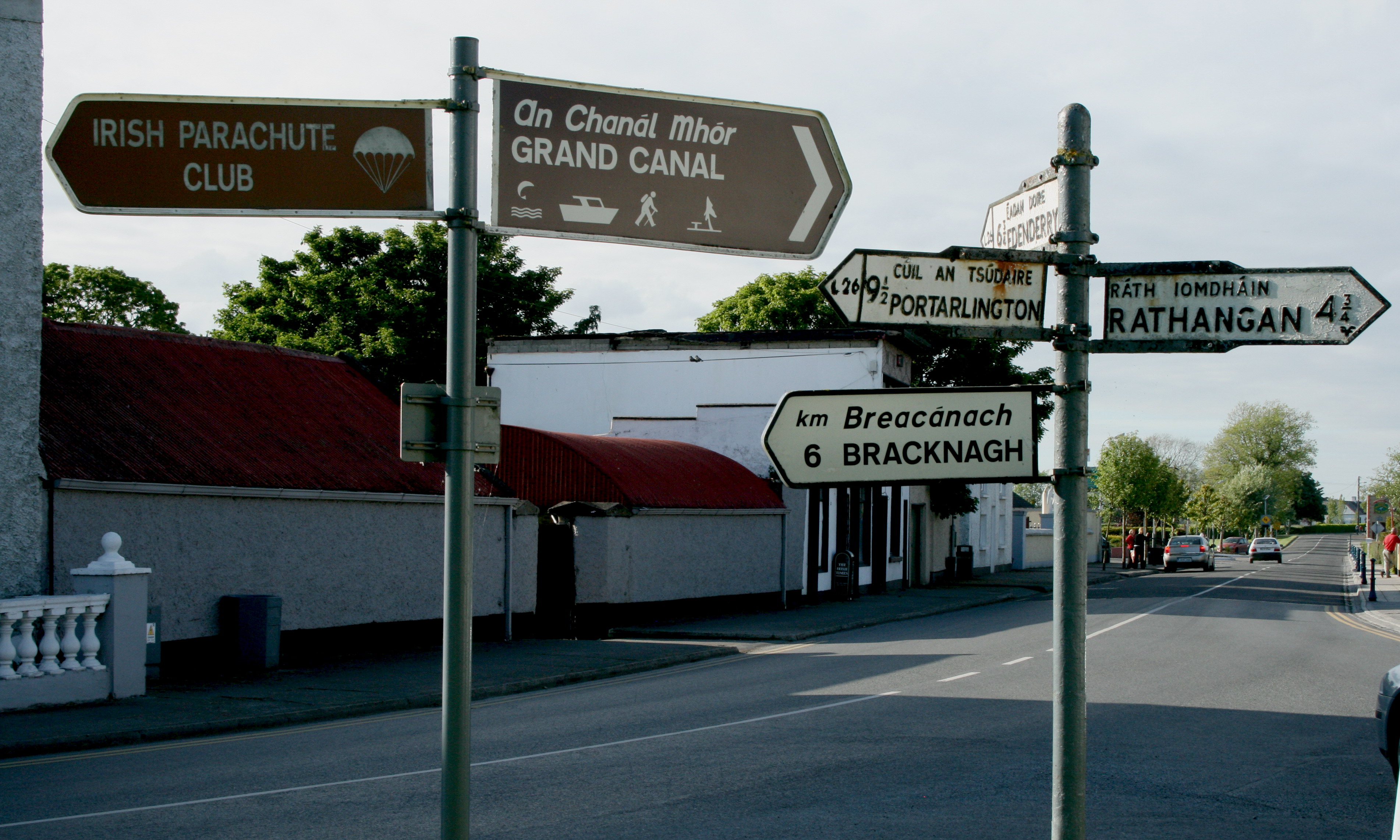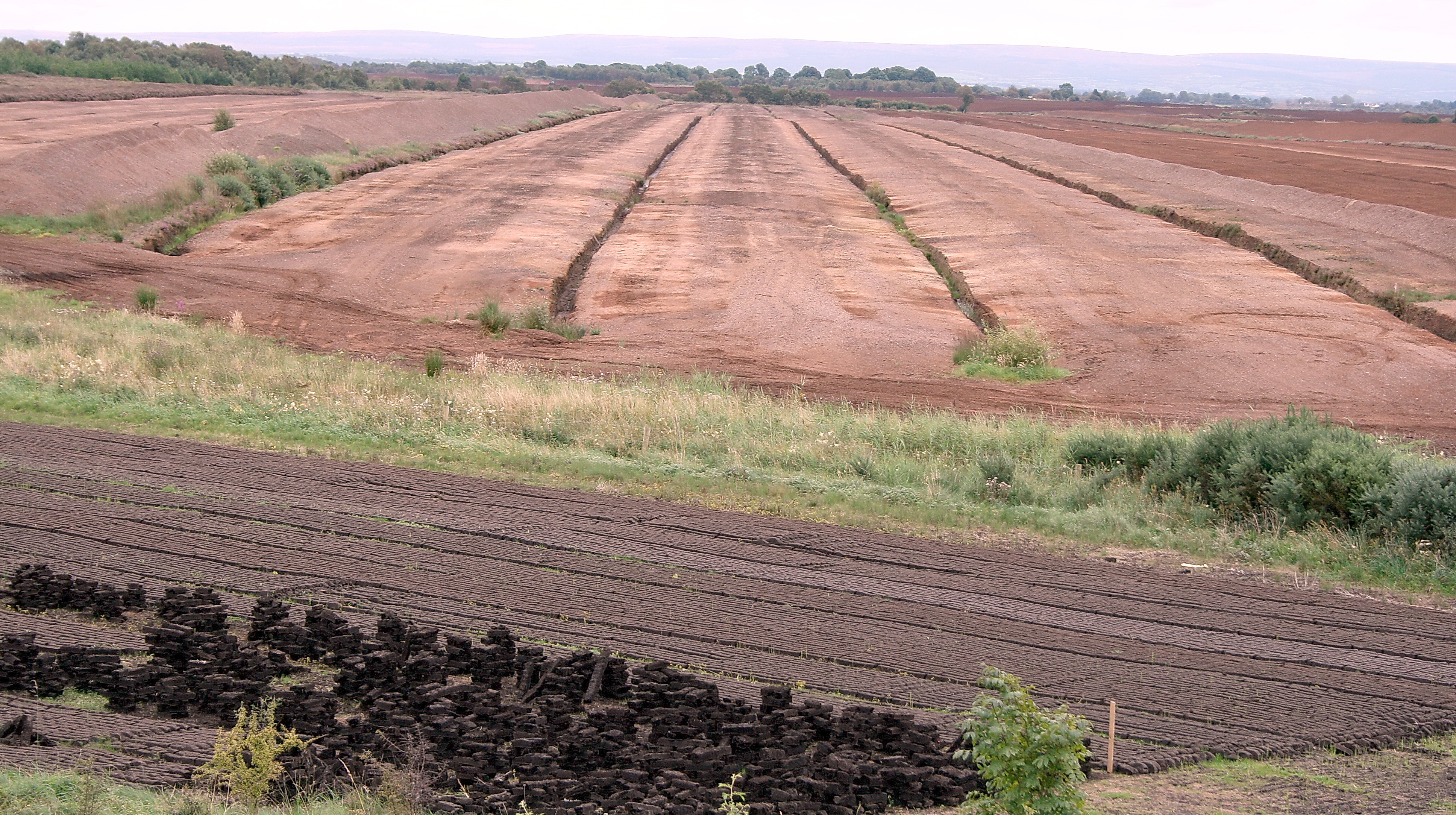|
Clonbullogue
Clonbullogue or Clonbolloge () is a village in County Offaly, Ireland. Location The village is located at the junction of the R401 and R442 regional roads. The ''Figile River'' runs through the village under the R442 near its confluence with the ''Philipstown River''. Between the village and Edenderry, 11 km to the north, lies the Bog of Allen. Clonbullogue is located near the point where three counties—Offaly, Laois and Kildare meet. The village is on an island of pasture land in the bog of Allen. The area is marked on the Cottonian map 1653 of Leix & Offaly as Clanbolg. In the 1659 Census, Robert Shallcross was listed as the titled person in the area. In 1679, Charles II granted this area to the Purefoy family and for a time the village was called Purefoy's Place. In 1798, the village was burned—the only part of Offaly to suffer this fate during the Rebellion. Two of the Wexford leaders, Colonel Anthony Perry and Father Mogue Kearns were captured here and were ... [...More Info...] [...Related Items...] OR: [Wikipedia] [Google] [Baidu] |
Clonbullogue Aerodrome
Clonbullogue Airfield is a small Irish airport located about west of Clonbullogue and south of Edenderry in County Offaly, Ireland. It is owned and operated by the Irish Parachute Club which is based at the field. The airfield has one grass runway running east–west which is . Six aircraft are based at the field, most of them owned by the Irish Parachute Club. There is usually busy parachuting Parachuting, including also skydiving, is a method of transiting from a high point in the atmosphere to the surface of Earth with the aid of gravity, involving the control of speed during the descent using a parachute or parachutes. For ... at weekends and public holidays so flying restrictions are enforced around this area. References External links Irish Parachute ClubFacebook Airports in the Republic of Ireland {{Ireland-transport-stub ... [...More Info...] [...Related Items...] OR: [Wikipedia] [Google] [Baidu] |
R401 Road (Ireland)
The R401 road is a regional road in Ireland, linking Kinnegad in County Meath to Kildare town in County Kildare. The total length of the R401 is . Route The official description of the R401 from the ''Roads Act 1993 (Classification of Regional Roads) Order 2012'' ''''. 2012-02-28. reads: :R401: Kinnegad, County Westmeath — Edenderry, County Offaly — Kildare Between its junction with R148 at Rossan in the county of |
County Offaly
County Offaly (; ga, Contae Uíbh Fhailí) is a county in Ireland. It is part of the Eastern and Midland Region and the province of Leinster. It is named after the ancient Kingdom of Uí Failghe. It was formerly known as King's County, in honour of Philip II of Spain. Offaly County Council is the local authority for the county. The county population was 82,668 at the 2022 census. Central Statistics Office figures Geography and political subdivisions Offaly is the 18th largest of Ireland's 32 counties by area and the 24th largest in terms of population. It is the fifth largest of Leinster's 12 counties by size and the 10th largest by population.Physical geography [...More Info...] [...Related Items...] OR: [Wikipedia] [Google] [Baidu] |
Regional Road (Ireland)
A regional road ( ga, bóthar réigiúnach) in the Republic of Ireland is a class of road not forming a major route (such as a national primary road or national secondary road), but nevertheless forming a link in the Roads in Ireland, national route network. There are over 11,600 kilometres (7,200 miles) of regional roads. Regional roads are numbered with three-digit route numbers, prefixed by "R" (e.g. R105). The equivalent road category in Northern Ireland are Roads in Northern Ireland#"B" roads, B roads. History Until 1977, classified roads in the Republic of Ireland were designated with one of two prefixes: Trunk Roads in Ireland, "T" for Trunk Roads and "L" for Link Roads. ThLocal Government (Roads and Motorways) Act authorised the designation of roads as National roads: in 1977, twenty-five National Primary roads (N1-N25) and thirty-three National Secondary roads (N51-N83) were initially designated unde Many of the remaining classified roads became Regional roads (formally ... [...More Info...] [...Related Items...] OR: [Wikipedia] [Google] [Baidu] |
1798 In Ireland
Events from the year 1798 in Ireland. Incumbent * Monarch: George III Events * March ** Great Britain's Irish militia arrest the leadership of the Society of United Irishmen marking the beginning of the Irish Rebellion of 1798. A number are arrested at the house of Oliver Bond on 12 March. ** Lord Castlereagh is appointed Acting Chief Secretary for Ireland. * 30 March – martial law is proclaimed in Ireland. * Spring – United Irishman and publisher Peter Finnerty is convicted and imprisoned for seditious libel. * April – the "dragooning of Ulster": Lieutenant-General Lake, Commander-in-Chief, Ireland, issues a proclamation ordering the surrender of all arms by the civil population of Ulster, effectively disarming the United Irishmen. * 21 April – Patrick (or William) "Staker" Wallace of the United Irishmen is flogged at Ballinvreena for plotting the assassination of Captain Charles Silver Oliver. He is hanged either immediately afterwards or in early July at Kil ... [...More Info...] [...Related Items...] OR: [Wikipedia] [Google] [Baidu] |
Anthony Perry
Anthony Perry (c. 1760– 21 July 1798), known as the "''screeching general''" was one of the most important leaders of the United Irish Wexford rebels during the 1798 rebellion. Background Perry was born in County Down, Ireland to a Protestant family and lived a prosperous life at Inch, near the Wexford/Wicklow border as a gentleman farmer. He enlisted in the local yeomanry corps as a second lieutenant responding to the Governments appeal to save the kingdom from radicalism during the height of anti- Jacobin paranoia in the mid-1790s. He took the United Irish Oath in 1797 and was made a colonel. As a United Irish colonel, Perry was responsible for the organisation and recruitment of the movement in north Wexford. A measure of this success was evident by the fact that the brutal coercion campaign unleashed by the Government 1797–98 did not identify Wexford as a United Irish stronghold until barely a month before the eventual outbreak. Arrest and torture The arrival of ... [...More Info...] [...Related Items...] OR: [Wikipedia] [Google] [Baidu] |
Mogue Kearns
Father Mogue Kearns ( ga, Mo Aodh Óg Ó Céirín; died 12 July 1798), sometimes called Moses Kearns, was an Irish Roman Catholic priest and United Irishman executed by the British on 12 July 1798, after leading 2,000 rebel troops in Wexford. Biography Mogue Kearns was born at Kiltealy, on the slopes of the Blackstairs Mountains, into a farming family. According to a story current in 1798, Kearns was a student in Paris at the height of the French Revolution and was hanged from a lamp-post by the mob. However, the weight of his body bent the lamp-post and his toes touched the ground. He was then rescued by a doctor who brought him back to consciousness. After his ordination, was appointed curate at Balyna, on the Kildare-Meath border. He was not long in the parish when dismissed by the Bishop for associating with the secret tenant-farmer society, the Defenders, then entering into a alliance with the United Irishmen. On his return from Kildare, he took up residence in Enniscorthy. K ... [...More Info...] [...Related Items...] OR: [Wikipedia] [Google] [Baidu] |
Irish Rebellion Of 1798
The Irish Rebellion of 1798 ( ga, Éirí Amach 1798; Ulster-Scots: ''The Hurries'') was a major uprising against British rule in Ireland. The main organising force was the Society of United Irishmen, a republican revolutionary group influenced by the ideas of the American and French revolutions: originally formed by Presbyterian radicals angry at being shut out of power by the Anglican establishment, they were joined by many from the majority Catholic population. Following some initial successes, particularly in County Wexford, the uprising was suppressed by government militia and yeomanry forces, reinforced by units of the British Army, with a civilian and combatant death toll estimated between 10,000 and 50,000. A French expeditionary force landed in County Mayo in August in support of the rebels: despite victory at Castlebar, they were also eventually defeated. The aftermath of the Rebellion led to the passing of the Acts of Union 1800, merging the Parliament of Ireland ... [...More Info...] [...Related Items...] OR: [Wikipedia] [Google] [Baidu] |
Bord Na Móna
Bord na Móna (; English: "The Peat Board"), is a semi-state company in Ireland, created in 1946 by the Turf Development Act 1946. The company began developing the peatlands of Ireland with the aim to provide economic benefit for Irish Midland communities and achieve security of energy supply for the recently formed Irish Republic. The development of peatlands involved the mechanised harvesting of peat, which took place primarily in the Midlands of Ireland. Over the years, Bord na Móna has expanded and diversified its portfolio of businesses to include biomass procurement and supply, power generation (peat based and renewable), waste recovery, domestic fuel products and professional and consumer horticulture products. In 2015, the company announced that the harvesting of peat for power generation is to be "phased out" by 2030, at which point the company would complete its transition to new sustainable businesses located across its bogs and landholding. The new sustainable busi ... [...More Info...] [...Related Items...] OR: [Wikipedia] [Google] [Baidu] |
Croghan Hill
Croghan Hill ( or ''Brí Éile'') is a hill with a height of in County Offaly, Ireland. The remains of an extinct volcano, it rises from the Bog of Allen and dominates the surrounding plains. Historically known as ''Brí Éile'', it is mentioned in Irish mythology and is traditionally seen as a sacred hill. On the summit is an ancient pagan burial mound with panoramic views, which reputedly became the inauguration site of the kings of Uí Failghe. On the eastern slope is an old graveyard and the remains of a medieval church, while at the western foot of the hill is the remains of a medieval settlement, church and castle. An ancient bog body, Old Croghan Man, was found nearby. The village of Croghan is at the southern foot of the hill. Archaeology and myth Croghan Hill is traditionally seen as a sacred place. [...More Info...] [...Related Items...] OR: [Wikipedia] [Google] [Baidu] |
1679 In Ireland
Events from the year 1679 in Ireland. Incumbent *Irish monarch, Monarch: Charles II of England, Charles II Events * Lismore Cathedral, Ireland, Lismore Cathedral (Church of Ireland) abandoned until 1749. Births *September 11 – Thomas Parnell, clergyman and poet (d.1718 in Ireland, 1718) *Anthony Duane, businessman in America (d.1747 in Ireland, 1747) Deaths *Sir George Hamilton, 1st Baronet of Donalong, soldier. References 1679 in Ireland, 1670s in Ireland 1679 by country, Ireland Years of the 17th century in Ireland {{Ireland-stub ... [...More Info...] [...Related Items...] OR: [Wikipedia] [Google] [Baidu] |
Fionn MacCumhaill
Fionn mac Cumhaill ( ; Old and mga, Find or ''mac Cumail'' or ''mac Umaill''), often anglicized Finn McCool or MacCool, is a hero in Irish mythology, as well as in later Scottish and Manx folklore. He is leader of the ''Fianna'' bands of young roving hunter-warriors, as well as being a seer and poet. He is said to have a magic thumb that bestows him with great wisdom. He is often depicted hunting with his hounds Bran and Sceólang, and fighting with his spear and sword. The tales of Fionn and his ''fiann'' form the Fianna Cycle or Fenian Cycle (''an Fhiannaíocht''), much of it narrated by Fionn's son, the poet Oisín. Etymology In Old Irish, finn/find means "white, bright, lustrous; fair, light-hued (of complexion, hair, etc.); fair, handsome, bright, blessed; in moral sense, fair, just, true". It is cognate with Primitive Irish ''VENDO-'' (found in names from Ogam inscriptions), Welsh ''gwyn'', Cornish ''gwen'', Breton ''gwenn'', Continental Celtic and Common Brittoni ... [...More Info...] [...Related Items...] OR: [Wikipedia] [Google] [Baidu] |






_(14750481494).jpg)